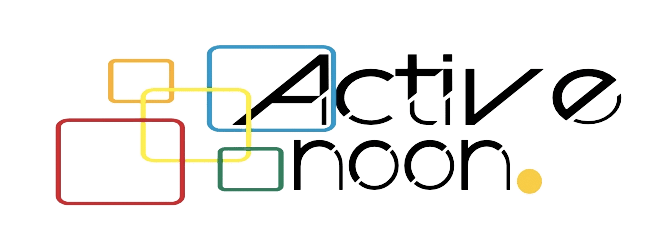Any call-reliant business, from real estate to software to language courses, is always seeking ways to generate and convert more inbound calls. Many miss call tracking, an invaluable tool to capture more callers, improve the customer journey, and ultimately, grow their bottom line.
Read on to learn everything you need to know about call tracking for business. And if you’d like to dive deeper, review Phonexa’s all-encompassing guide to call tracking, which dissects call tracking in simple terms everyone can understand.
Without further ado, let’s dig into call tracking and its benefits for business.
What Is Call Tracking?
From the first acquaintance with your call ads to the conversion, your callers leave tons of valuable information that you can use to improve the customer experience, connect your callers to the most relevant sales agent, and increase sales.
- In a nutshell, utilizing call tracking software collects trackable call data you can use to streamline the customer journey.
Imagine selling flood insurance, among other insurance products. Chances are you would want to involve agents from flood-prone states – Florida, Louisiana, California, etc. – as they would better understand the caller’s concerns and, therefore, have a greater chance of converting them. Call tracking would allow you to distribute callers according to their location, a powerful selling technique unavailable to businesses that don’t track inbound calls.
Tracking incoming calls opens much more possibilities than distributing callers by location. You can set up a fairly complex distribution system based on the caller’s demographics, psychographics, history of purchases, the ad that triggered the call, and other trackable data.
How Does Call Tracking Work?
Regardless of the software, call tracking always boils down to using a unique number for each of your customers – or groups of customers, advertisements, traffic channels, etc. – to understand where your callers come from and what they want.
Call tracking works as follows:
- You place unique call tracking phone numbers on your website (or wherever you want to generate inbound calls), as shown in the table below.
Trackable Phone Numbers
| Local Numbers | Toll-Free Numbers | Vanity Numbers (for example, 844-PHONEXA) | Toll-Free Vanity Numbers |
| Call tracking numbers for local search (for example, to promote your physical stores) | Toll-free phone calls for international campaigns | Memorable numbers for international campaigns | Toll-free memorable numbers for international campaigns |
When choosing between static and dynamic phone numbers, choose the latter as only dynamic call tracking numbers – along with Dynamic Number Insertion (DNI) – enable sophisticated call tracking and routing for online campaigns. As for static numbers, you can use them on billboards, TV, and in print media, and other traditional marketing campaigns.
- The caller dials your trackable phone number. As the caller dials a unique number shown exclusively for them – other callers would see a different number – the system redirects the call (with no signs on the caller’s side) to your internal sales department or external sales reps (if you sell calls).
- During the routing process – especially if an Interactive Voice Response is in place – call tracking software collects every bit of available data on the caller, from location to whether the caller is new or recurrent to other relevant details.
- Your sales agent converts the caller. Whether the call is converted or bounced, call tracking software records it and tracks multiple data, such as, for example, the timestamp of the call and the caller’s phone number and feedback.
With call tracking software, even bounced calls bear actionable insights into your marketing and callers.
The Holy Grail of Call Tracking for Businesses: Call Distribution
There’s no better way to convert callers than by connecting them to a relevant sales agent. You may set up various distribution paths, from the simplest to the most complex, connecting callers based on:
- Availability: the first available agent takes the call.
- Performance: the top-performing sales rep gets the call.
- Location: agents of the same location receive the call.
- Company size (if you sell call leads): the biggest company – or the company that pays the most – is the first to take the call.
- Cherry-pick: sales agents can pick the callers they want.
Each call distribution method has its pros and cons. For example, distributing callers by location may result in overwhelming agents from the most popular locations while leaving the rest with little to no calls. At the same time, you can create a complex call lead distribution route, mixing various distribution criteria, as shown below.
Why Is Call Tracking Important for Business?
Even used independently – which is rarely the case, as call tracking software is usually integrated with call distribution and call analytics software – call tracking can grant you more calls and a higher conversion rate.
Below are five major benefits for tracking telephone calls in online business.
1. Learn Your Customers Through and Through
Every dimension of your business, from customer support to sales, depends on how well you know your clients. Call tracking software enables deep insights into your customers by collecting three types of data:
- Call data: the time, duration, and success of the call.
- Caller’s data: demographics, psychographics, history of purchases, feedback, etc.
- Marketing data: ads or marketing channel that triggered the call.
Knowing your customers makes it easier to make them happy and, as a result, convert.
2. Automate and Scale
Around three-quarters of marketers convert more leads with the help of automation software, with the influx of qualified leads growing by up to 450%. Likewise, call tracking helps you dissect your callers while simultaneously processing any number of inbound calls.
3. Improve Agent Performance
Evaluating the performance of your agents is just as valuable as treating your callers well. Call tracking data can clearly show you which agent converts how many calls, enabling data-driven call distribution and incentives.
4. Improve Budget Management
Knowing what ad triggered how many calls and how many of those calls converted enables smarter budget allocation. You can double down on profitable campaigns, traffic sources, and ads and eliminate everything that underperforms.
5. Prevent Call Fraud
Irrelevant callers, duplicated leads, and outright call fraud eat away your resources. On the other hand, call tracking can reveal duplicated and fraudulent leads in real-time, preventing them from clogging your sales funnel or consuming your sales reps’ time.
Call Tracking as a Service Is a Great Solution To Grow Your Business
An up-to-date call tracking service for marketing and sales can revolutionize your business with unexpected insights on your callers and traffic channels. Luckily, you don’t need much to upgrade your business with a flexible phone call tracking system. A few hours of integration and setting up, and you’re set!
















Leave a Reply